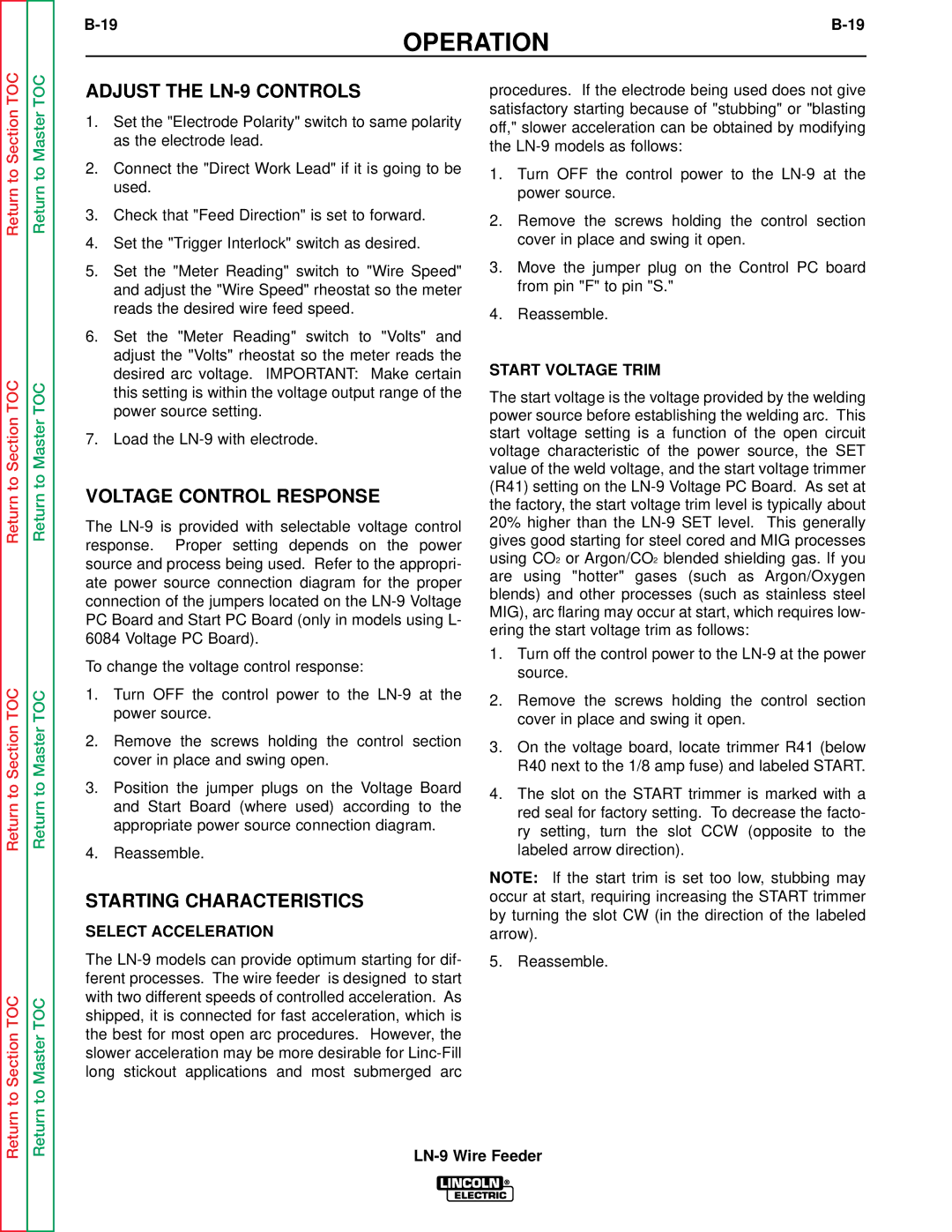
OPERATION
Return to Section TOC
Return to Section TOC
Return to Section TOC
Return to Section TOC
Return to Master TOC
Return to Master TOC
Return to Master TOC
Return to Master TOC
ADJUST THE LN-9 CONTROLS
1.Set the "Electrode Polarity" switch to same polarity as the electrode lead.
2.Connect the "Direct Work Lead" if it is going to be used.
3.Check that "Feed Direction" is set to forward.
4.Set the "Trigger Interlock" switch as desired.
5.Set the "Meter Reading" switch to "Wire Speed" and adjust the "Wire Speed" rheostat so the meter reads the desired wire feed speed.
6.Set the "Meter Reading" switch to "Volts" and adjust the "Volts" rheostat so the meter reads the desired arc voltage. IMPORTANT: Make certain this setting is within the voltage output range of the power source setting.
7.Load the
VOLTAGE CONTROL RESPONSE
The
To change the voltage control response:
1.Turn OFF the control power to the
2.Remove the screws holding the control section cover in place and swing open.
3.Position the jumper plugs on the Voltage Board and Start Board (where used) according to the appropriate power source connection diagram.
4.Reassemble.
STARTING CHARACTERISTICS
SELECT ACCELERATION
The
procedures. If the electrode being used does not give satisfactory starting because of "stubbing" or "blasting off," slower acceleration can be obtained by modifying the
1.Turn OFF the control power to the
2.Remove the screws holding the control section cover in place and swing it open.
3.Move the jumper plug on the Control PC board from pin "F" to pin "S."
4.Reassemble.
START VOLTAGE TRIM
The start voltage is the voltage provided by the welding power source before establishing the welding arc. This start voltage setting is a function of the open circuit voltage characteristic of the power source, the SET value of the weld voltage, and the start voltage trimmer (R41) setting on the
1.Turn off the control power to the
2.Remove the screws holding the control section cover in place and swing it open.
3.On the voltage board, locate trimmer R41 (below R40 next to the 1/8 amp fuse) and labeled START.
4.The slot on the START trimmer is marked with a red seal for factory setting. To decrease the facto- ry setting, turn the slot CCW (opposite to the labeled arrow direction).
NOTE: If the start trim is set too low, stubbing may occur at start, requiring increasing the START trimmer by turning the slot CW (in the direction of the labeled arrow).
5. Reassemble.
